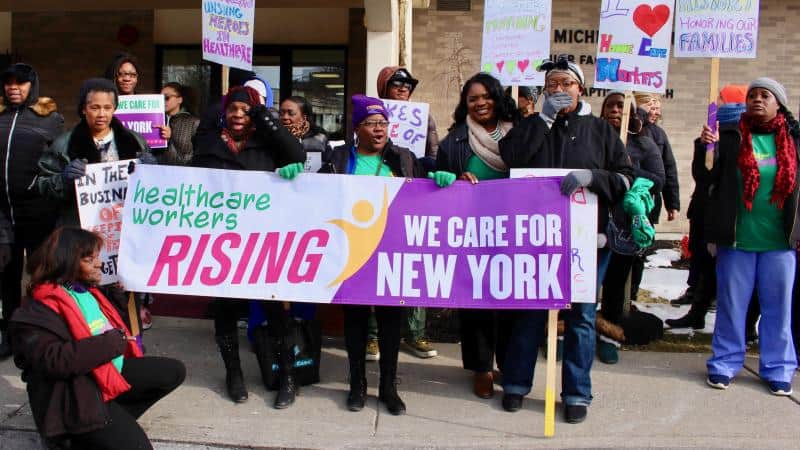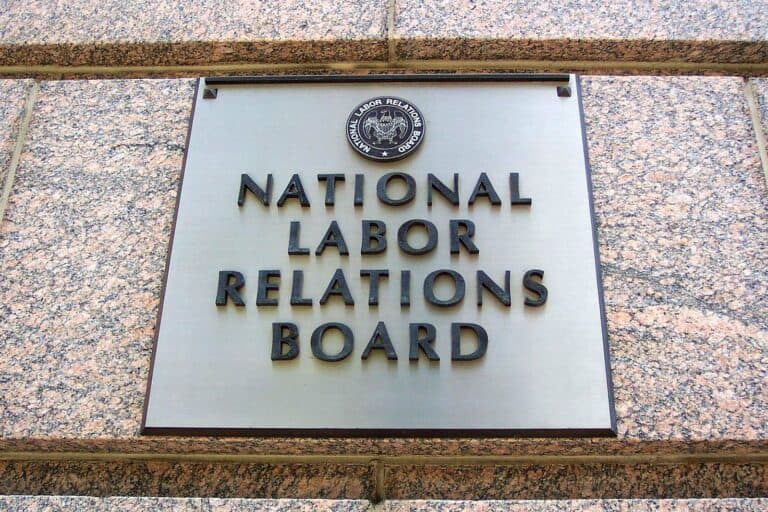Amy Maurer is a student at Harvard Law School and a member of the Labor and Employment Lab.
Home healthcare workers provide essential care to some of the most vulnerable members of our society. Despite the important services these workers provide, jobs in the home care industry are generally characterized by low pay and difficult working conditions.
On March 26, the New York State Court of Appeals, issued its decision in the joint appeal of Andryeyeva v. N.Y. Health Care, Inc. and Moreno v. Future Care Health Servs., Inc, upholding a longstanding New York State rule that allows employers to pay home care workers for only 13 hours of a 24-hour shift.
The “13-hour rule” is based on the New York Department of Labor’s (NYDOL) interpretation of the New York Wage Order. Section 142-2.1(b) of this statute requires that employees are paid for the time they are “required to be available for work at a place prescribed by the employer.” There is, however, a carve out specifically for residential employees who live on their employer’s premises. These employees “shall not be deemed to be permitted to work or required to be available for work: (1) during his or her normal sleeping hours solely because such employee is required to be on call during such hours, or (2) at any other time when he or she is free to leave the place of employment.” A 2010 NYDOL Opinion Letter explained the Department’s longstanding interpretation of this exception to apply to any “live-in employee,” whether or not they are “residential employees” who actually live on their employer’s premises, stating that live-in employees “must be paid not less than for thirteen hours per twenty-four hour period,” assuming that they are given at least eight hours for sleep, five hours of which must be uninterrupted, and that they are given three hours for meals.
If workers on 24-hour shifts do not get the requisite amount of sleep periods and meal breaks, the law requires that they be paid for the time they have worked. In practice, however, many workers have reported that they rarely approached this amount of break time because of the needs of their clients, and, yet, that they were still only paid for 13 hours. The majority of home healthcare work is performed by employees of private agencies that receive funding through Medicaid. Generally, Medicaid pays a flat rate for each client’s care, which does not allow for much flexibility to cover additional hours of care.
In both Andryeyeva and Moreno, the plaintiffs sought certification of a class of home health care workers alleging that their employers, private home care agencies, failed to pay the workers the required minimum wage for all hours worked of a 24-hour shift. While the lower court had determined that the NYDOL’s interpretation of the Wage Order is “neither rational nor reasonable,” the Court of Appeals disagreed, holding that “DOL’s interpretation of its Wage Order does not conflict with the promulgated language, nor has DOL adopted an irrational or unreasonable construction, and so the Appellate Division erred in rejecting that interpretation.” The Court explained that when an agency’s interpretation had been followed for a long period of time, the interpretation is “entitled to great weight and may not be ignored.” Despite the fact that the NYDOL’s interpretation might not be the most natural reading of the Wage Order, the Court stated that “does not make the interpretation irrational.”
Importantly, the Court noted that, while they were upholding the NYDOL’s interpretation of the Wage order, the plaintiffs’ allegations were “disturbing and paint a picture of rampant and unchecked years-long exploitation.” The plaintiffs’ alleged that they rarely, if ever, received the required sleep and meal times, and their employers failed to record whether or not they received these breaks. The Court explained that if an employee does not receive the required meal and sleep time, this is a “hair trigger” and it “makes the employer liable for paying every hour of the 24-hour shift, not just the actual hours worked.” If, for example a worker receives only receives only four hours and 59 minutes of uninterrupted sleep, the employer is required to pay the full eight hours that were supposed to be dedicated to sleep. The Court stated the “allegations suggest a policy or practice of unlawful action of the type our courts have previously found ripe for class treatment,” and remitted to the lower court consider alternative grounds for class certification.
While the Court of Appeals has decided that the 13-hour rule is a valid interpretation of the NY Wage Order, these cases illustrate the negative effects this rule has on both workers’ lives and patient outcomes. The rule remains controversial and workers and legislators have stated their intentions to continue to work to have the rule changed. Hundreds of home care workers petitioned to put an end to both the 13-hour rule and to 24-hour shifts altogether, citing the difficult working conditions they endure, and “a system of abuse and coercion in which home care agencies use threats of firing or imprisonment should anything happen to the patient during a 24-hour shift.” Alternatively, NYDOL and industry proponents of the 13-hour rule argued that changing the policy would cripple the industry, and Medicaid would not be able to accommodate the additional costs.
Instead of continuing to rely on this unfair policy, the NYDOL and the state legislature should turn their attention to fixing and fully funding the home care system. Maintaining this rule for low cost 24-hour care requires that workers spend a full day away from their own homes and their own families, doing difficult work for which they are not fairly compensated. By doing away with the 13-hour rule and providing adequate funding for Medicaid to fully pay for 24-hour care that many people need, they will ensure not only that workers are paid fairly, but also that their clients receive high quality care. As the U.S. population ages, home care is expected to be one of the fastest growing industries, and shortages in home care worker availability are expected to grow. The ability to take care of the growing number of people who require 24-hour care should not depend upon the exploitation of the workers who take care of them. Abolishing the 13-hour rule would be one step forward to improving conditions for both workers and their clients, and ensuring that these are jobs worth doing as demand for home care work grows.










Daily News & Commentary
Start your day with our roundup of the latest labor developments. See all
July 11
Regional director orders election without Board quorum; 9th Circuit pauses injunction on Executive Order; Driverless car legislation in Massachusetts
July 10
Wisconsin Supreme Court holds UW Health nurses are not covered by Wisconsin’s Labor Peace Act; a district judge denies the request to stay an injunction pending appeal; the NFLPA appeals an arbitration decision.
July 9
In Today’s News and Commentary, the Supreme Court green-lights mass firings of federal workers, the Agricultural Secretary suggests Medicaid recipients can replace deported farm workers, and DHS ends Temporary Protected Status for Hondurans and Nicaraguans. In an 8-1 emergency docket decision released yesterday afternoon, the Supreme Court lifted an injunction by U.S. District Judge Susan […]
July 8
In today’s news and commentary, Apple wins at the Fifth Circuit against the NLRB, Florida enacts a noncompete-friendly law, and complications with the No Tax on Tips in the Big Beautiful Bill. Apple won an appeal overturning a National Labor Relations Board (NLRB) decision that the company violated labor law by coercively questioning an employee […]
July 7
LA economy deals with fallout from ICE raids; a new appeal challenges the NCAA antitrust settlement; and the EPA places dissenting employees on leave.
July 6
Municipal workers in Philadelphia continue to strike; Zohran Mamdani collects union endorsements; UFCW grocery workers in California and Colorado reach tentative agreements.